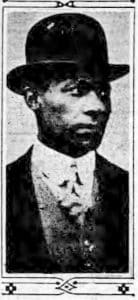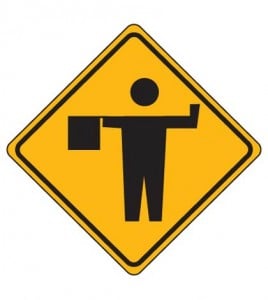Waterloo hosted race riot trial

Nearly 100 years ago, Waterloo became center stage of one of the final legal acts related to the 1917 East St. Louis race riots when Leroy Bundy, the man charged with spearheading the riots, was brought to Waterloo in March, 1919, to face trial in the Monroe County Courthouse.
Bundy, a dentist by trade, was also a political organizer in East St. Louis before the riots began.
According to the March 19, 1919 edition of the St. Louis Post-Dispatch, Bundy was charged with “plotting to kill two East St. Louis detectives July 1, 1917, which precipitated the race riot of the following day.”
Thirty-three other men connected with the riots (20 white, 13 black) had already been tried and convicted in St. Clair County by the end of 1917.
Bundy avoided trial by fleeing to his native Cleveland during the riots, afterward citing a fear of being lynched, not guilt, as a reason for his departure.
By the time of his trial in Waterloo nearly two years later, the riots had become national news and led to a 10,000-person march of silent protest in New York City.
Due to negative local press and local sentiment about the riots around East St. Louis, Bundy and his lawyers felt that he would not be able to receive a fair trial.
Once extradited from Cleveland, his lawyers secured a change of venue “because of a feeling against Bundy in St. Clair County,” according to the Post-Dispatch.
The trial commenced in Waterloo in March, 1919. The twelve men who sat on the jury in Waterloo were all from Monroe County.
Included on the jury were: William Bodenbach, Anton Eichenseers, William Weber, Hy. Feldmeier, Henry Hern, Jr., Daniel Davis, Henry Gruber, George Klamp, William Offermann, Fred Eidmann, Thomas Jennings and William Senf.
On March 28, 1919, the jury found Bundy “guilty of murder in the manner and form as charged in the indictment,” which included inciting to riot.
Bundy spent a year in the Southern Illinois Penitentiary (now Menard Correctional Facility) in Chester working as a dentist until his appeal reached the Illinois Supreme Court.
Bundy’s lawyers cited insufficient evidence, coercion of witnesses and several other grounds for appeal.
The judgement in the case was ultimately reversed as a result of a combination of claims, including the discovery that one of the jurors for the trial had been declared insane as a result of “severe melancholia.”
The East St. Louis race riots were, in part, a result of labor disputes arising from local white laborers fearing unemployment from an influx of black workers from the South.
The riots have been described as one of the bloodiest labor-related riots in U.S. history, as well as being one of the most destructive race-related riots.
Estimates of black deaths range between 50 and 200, with nine confirmed white deaths.
In the aftermath of the riots, over 6,000 residents of East St. Louis were left homeless in addition to over $400,000 ($8 million, adjusted for inflation) in property damage.
The riots are credited as a precursor to the larger Civil Rights Movement of the 1950s and 60s.





